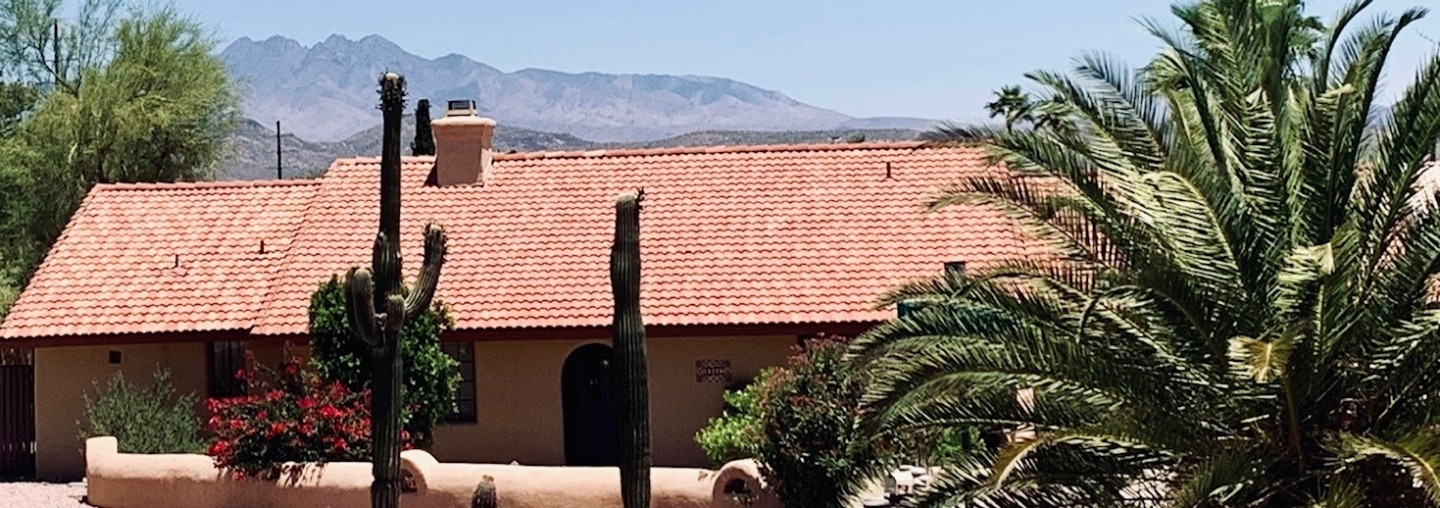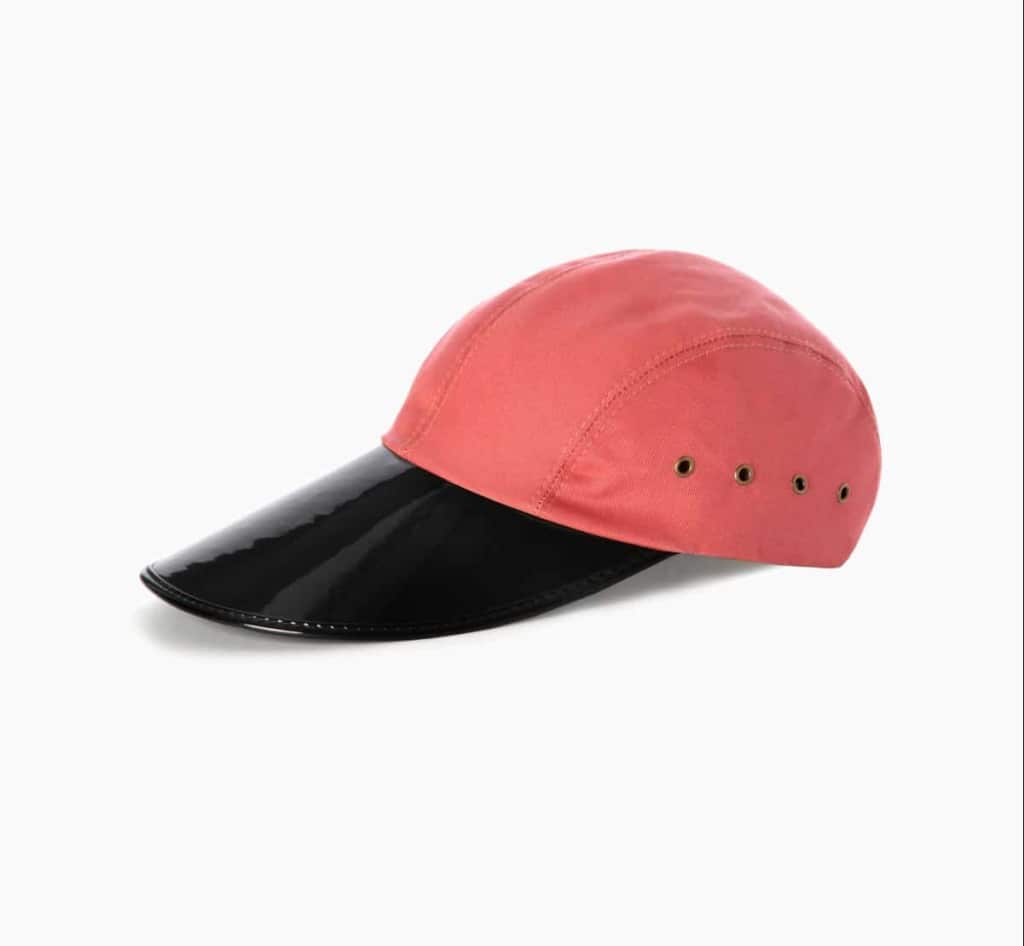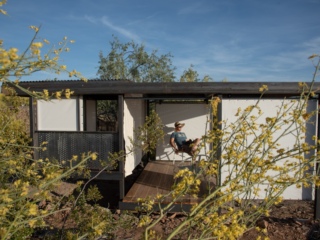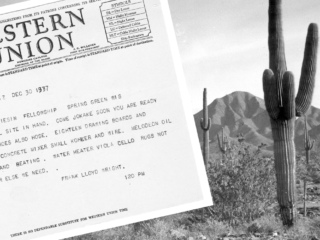
Wright, Hemingway, and the Sea
Mark Johnson | Jul 21, 2021
Mark Johnson, Frank Lloyd Wright Foundation’s Director of Hospitality Operations, discusses how Frank Lloyd Wright and Ernest Hemingway have much in common.
“Now, when all these white canvas wings, like sails, are spread, the buildings will look something like ships coming down the mesa, rigged like ships balanced in the breeze.”
—Frank Lloyd Wright, writing about Ocatillo Desert Camp, his original Arizona winter camp.
I grew up in Jupiter, Florida, the place where the Gulf Stream flows closest to land, and with it, clear waters and big fish. As a child, I was mostly barefoot, with a fishing rod in hand. So, after reading The Old Man and the Sea as a 9th grade school assignment, I became a life-long Ernest Hemingway fan. Back then, the story was familiar to me through the boy’s eyes. Now, I appreciate the perspective of the old man, Santiago. As Frank Lloyd Wright said, “the older I get, the more beautiful life becomes.”
After Jupiter, life took me to architecture school, a building contractor’s license, into city planning, and even working for a former President. Eventually, I found myself here, furthering Frank Lloyd Wright’s legacy at Taliesin West. When my wife and I moved to Arizona three years ago, our priority was to find a house that looked like it belonged in the desert. A house loaded with character and soul, and deserving of a name.

Young Mark Johnson fishing
In 2018, the Arizona housing market was already red hot. Homes we liked were always under contract before we could see them. So that started a daily 6:00 AM scan of new listings. One morning a beautiful looking home, that turned out to be a genuine adobe, showed up in the feed. I texted our realtor the address and this is the response I got; “I’m crying right now. That’s my childhood home, the home my father built for my mother, her dream home. When you described the home you were searching for, this is the home I thought of!” We looked at it that morning and made an offer that afternoon.
The home sits at the edge of the desert against the backdrop of Four Peaks mountains, known to the local Yavapai people as wi:khoba, thus the name “wi:khoba adobe.” It is low slung and seems to emerge from the desert floor. The rammed earth construction provides impressive 14” thick walls. Saltillo tile flooring, natural wood French doors and windows, and live edge shelving add to the organic feel throughout. Large porches and overhangs provide protection from the desert sun while skylights provide natural filtered light. Outside, there is a Koi pond and stone walls reminiscent of Wright’s desert masonry construction. My realtor said that as a young girl she and her sisters were tasked with collecting stones from the surrounding desert, with which the walls and pond were built. Her father must have been inspired, in many ways, by Frank Lloyd Wright, including his division of labor.
The house feels like it is part of the desert, and has been there forever, solid and quiet. It reminds me of the opening passages of Islands in The Stream, “the house felt as much like a ship as a house.” I then started to see Taliesin West differently. I began to see nautical references everywhere, from the canvas roofs and port-hole windows, to the compact bathrooms encased in natural wood or aluminum, feeling much like the interior on a boat. Even the point that overlooks Camel Back Mountain and the setting sun is called the Prow, defined as “the portion of a ships bow above water.”
“The house felt almost as much like a ship as a house. Placed there to ride out the storms, it was built into the island as though it were a part of it.”—Ernest Hemingway, Islands in the Stream
Hemingway and Wright have much in common. Both lived in Oak Park, Illinois, they each influenced their respective fields more than anyone in their century, they each are responsible for perpetuating a larger-than-life persona, and they died just two years apart. Their lives have been documented by the same biographers, Ken Burns on film and Paul Hendrickson on paper. It seems, however, the two never met. Hemingway supposedly was not pleased about a Wright building proposed for Venice, Italy. Wright, in a 1956 New York Times Article, responded, “Hemingway said he was a friend of mine, but I’ve never met him. However, I’ve admired some of his work.” Perhaps the nautical themes of Frank Lloyd Wright deserve more attention, but any link between he and Hemingway, seems to end there.
As for me, wi:khoba adobe is undoubtedly the most beautiful and character-filled home I’ll ever live in. And I hope my time at Taliesin West will be as beneficial to the Frank Lloyd Wright Foundation as it has been to me.

CHEROKEE RED OYSTERMAN HAT
Ernest Hemingway’s favorite hat!
The Oysterman is the most famous of Quaker Marine’s classics. It was a favorite of Ernest Hemingway, who wore it duck hunting in Idaho and sport fishing in Cuba and Key West. Quaker Marine offered this hat for more than 60 years before the business closed down during the Great Recession. It is now being manufactured once again — by hand — in the original factory from the 1950s in the USA.










